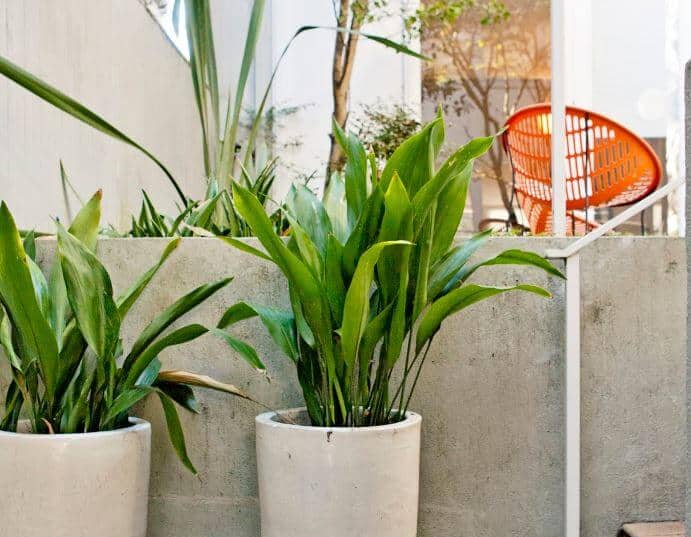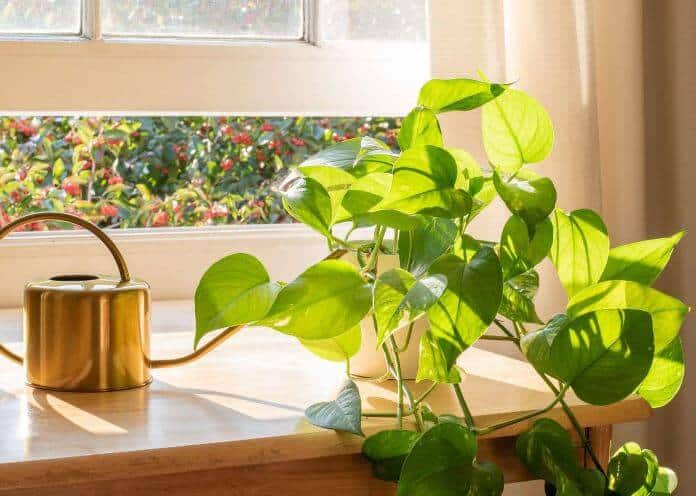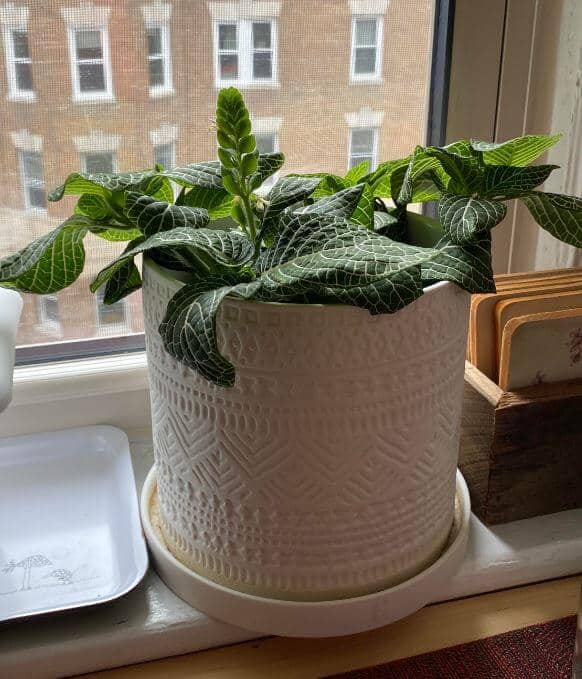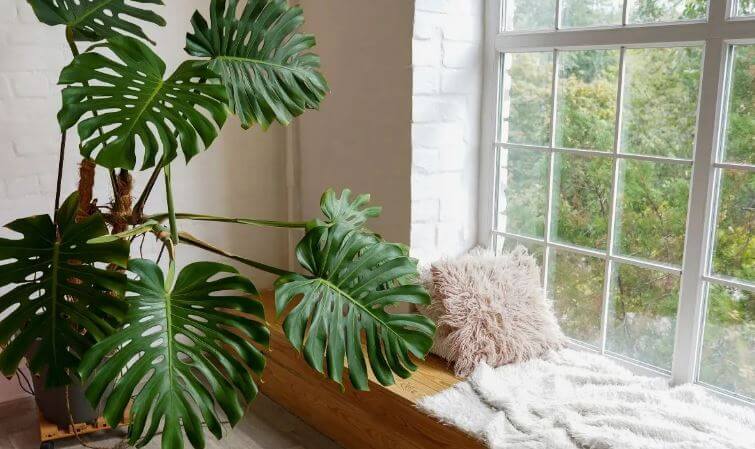Last Updated on September 9, 2023 by a Friendly Gardener
North-facing windows are generally characterized by shade rather than direct sunlight, so this will determine what type of plant you can place near or on a north-facing windowsill. Many plants require some direct sunlight or bright indirect sunlight, hence placing these creatures in north-facing windows will cause them to suffer. During winter seasons, a north-facing window will provide a very low-light environment.
For north-facing windows plants need to thrive in partial shade or low-light conditions. These plants live in the shade in their natural habitats as understory plants below other vegetation, live on a rainforest floor, or latch onto trees and cascade downward. This type of plant is an ideal choice if you have a north-facing window. Here are our favorites.
Considerations for North-Facing Window Plants
Before you choose your houseplant, here are several things to consider:
-
Environmental temperature
Some plants that are native to tropical climates require a relatively warm and often humid location.
-
Natural Light Levels
Consider the natural light levels in the room where your north-facing window is located. Are there other windows and how much natural light do they contribute to overall natural lighting in the room? Also, consider any seasonal lighting averages that may affect your plant.
-
Supplementing with Artificial Light
Is supplementing light with a grow light a possibility when seasons are particularly dark in terms of natural light?
-
Overwatering
North-facing window plants may be more susceptible to overwatering and misting as they do not have direct sunlight to dry out the soil bed. Excessive moisture retention can lead to root rot, fungal infections, or death.
Best Plants for North-Facing Windows
Cast Iron Plant

This is a favorite for low-light conditions and beginner gardeners. As its name implies, it is difficult to kill. Botanically known as the Aspidistra Elatior, this is a hardy and resilient plant that can adapt to almost any environment and is especially forgiving when neglected. Excessive light can be detrimental to these plants, making them an ideal selection for a north-facing window. Characterized by thick green leaves that arch elegantly outward, they are slow growers but become increasingly beautiful as they mature. They like moist soil but are at risk for overwatering, so allow the soil to dry completely before watering anew.
Golden Pothos

Everyone should have an Epipremnum Aureum in their indoor garden. Commonly called the Golden Pothos, pothos varieties are undemanding and easy to care for. The pothos is a strong, resilient plant that prefers indirect, filtered sunlight making it excellent for a north-facing window. It also thrives in the shade as we as in spots with cooler temps, so if you have air conditioning don’t worry. These plants have a trailing growth habit with vines reaching as much as 30 feet in length. They make stunning additions to indoor décor. Hang your pothos high in your window for the full benefit of its beauty. Water when the soil bed dries and prune to keep your plant looking its best.
Nerve Plant

The Fittonia plant is popularly named the ‘Nerve plant’ due to the veining on the foliage which may appear in a variety of colors against a dark green background. Veins may come in shades of green, white, silver, or even pink making it quite the décor accent. The Fittonia prefers a low-light environment that is warm and humid. A north-facing bathroom window would be perfect as well as inclusion in a terrarium due to its love of humidity. Soil beds should be well-draining and kept evenly moist. Overwatering can lead to root rot.
Peace Lily

Peace lilies are a flowering indoor plant that does not require a great amount of sunlight. Known as the Spathiphyllum Wallisii, this lovely indoor plant will produce blooms year-round with adequate light and a north-facing window caters to their light needs. Peace lilies have a slow growth habit. A communicative plant, it will let you know when it needs a drink by wilting quite dramatically. But once you water it, it revives very quickly. This is a plant that likes a good soaking and then should be left to dry out before watering again. It also appreciates regular misting.
Snake Plant

The Sanaseviera Trifasciata is a wonder of nature. This species does well with some direct and indirect sunlight, but also adapts well to low-light conditions. As such, it is a very popular houseplant and is particularly indicated for north-facing windows. Sword-shaped leaves can grow from 6 inches to an impressive 8 feet tall. Snake plant colors and patterns will vary depending on the specific variety. The trifasciata leaves feature light green stripes with yellow borders. If you have a snake plant that is currently in direct sunlight, do not place it abruptly in a low-light environment or vice versa as this can traumatize your plant. Snake plants do not tolerate overwatering and dislike the cold.
Swiss Cheese Plant

This tropical plant, botanically named the Monstera Deliciosa, hails from Mexico and Panama. Large heart-shaped foliage with fenestrations formed as slits or holes accounts for its popular name, although this characteristic emerges once the Monstera has reached maturity. Swiss Cheese plants do well in low-light environments, so north-facing windows are optimal. Excessive sunlight exposure can burn their delicate foliage. This is another species among indoor plants for north-facing windows that are sensitive to overwatering. Allow your soil bed to dry approximately two inches deep before watering again. Swiss Cheese plants also benefit from a monthly feeding with a nitrogen-rich fertilizer.
ZZ Plant

The Zanzibar Gem, officially known as the Zamioculcas Zamiifolia, are exceptional houseplants for low light conditions. They are also known to flourish in spaces with only artificial light and without windows. These plants are at risk of foliage scorching when placed in direct sunlight. The ZZ is a forgiving plant when neglected and does not require frequent watering. Once monthly should suffice. Dark green foliage on strong stems characterizes these plants. They may grow three feet high with proper care but will do so slowly. Due to their dislike of overwatering, the soil must be well-draining, and pots should contain perlite, pumice, or gravel to ensure drainage.
A Final Thought
Not all plants require direct or bright indirect light to thrive. Numerous plants do well in filtered light with partial shade. It’s important to select the appropriate species for your preferred location. Above are 7 hardy plants with beautiful foliage to adorn your north-facing window.

